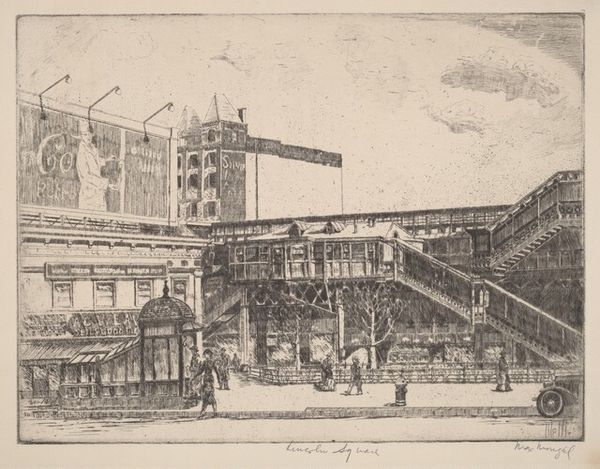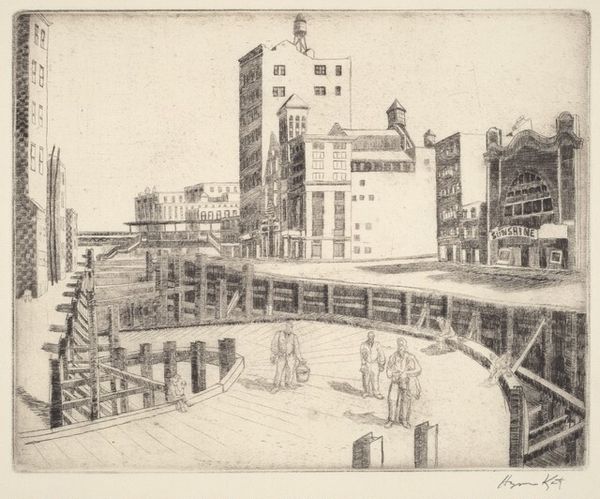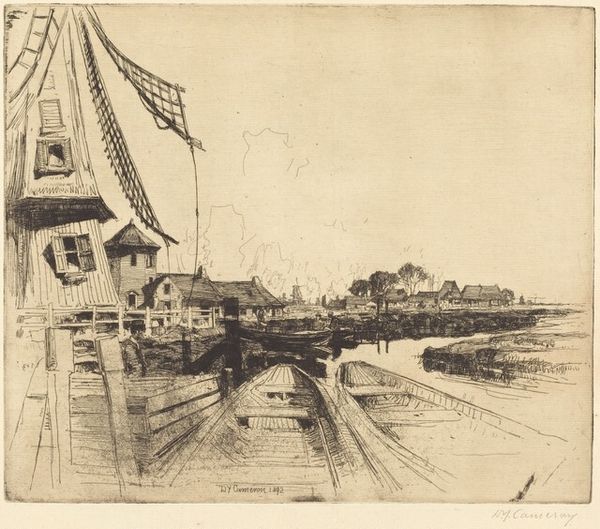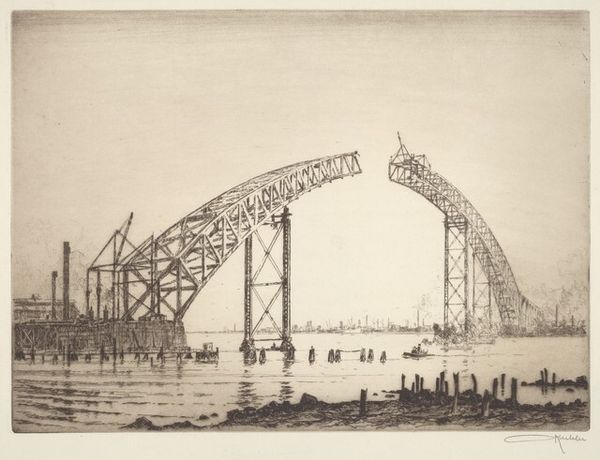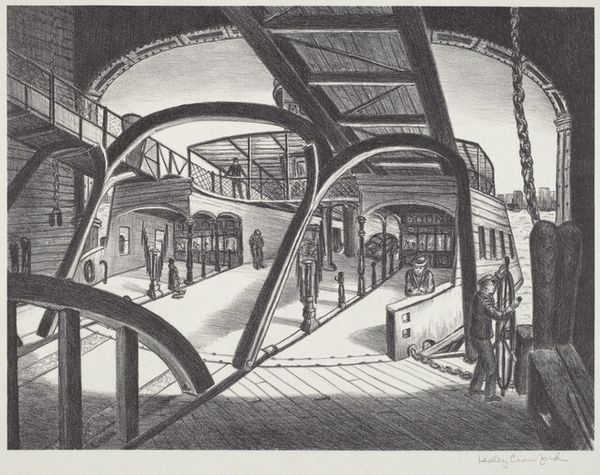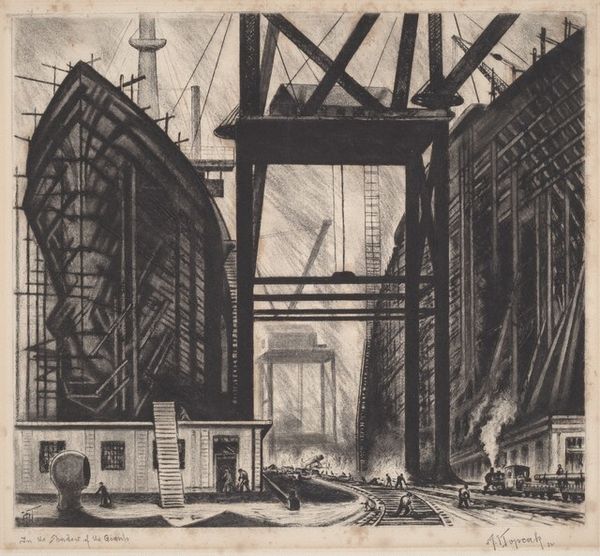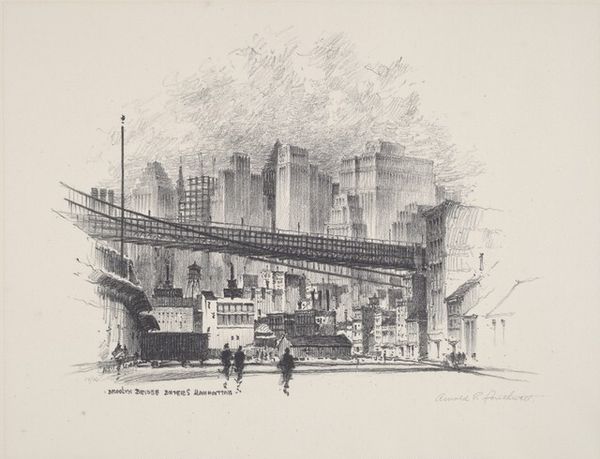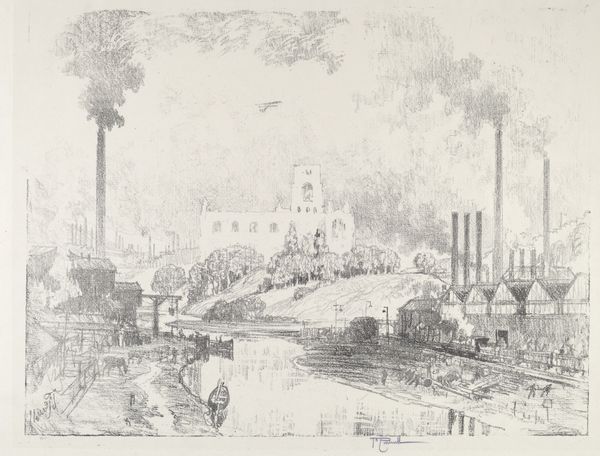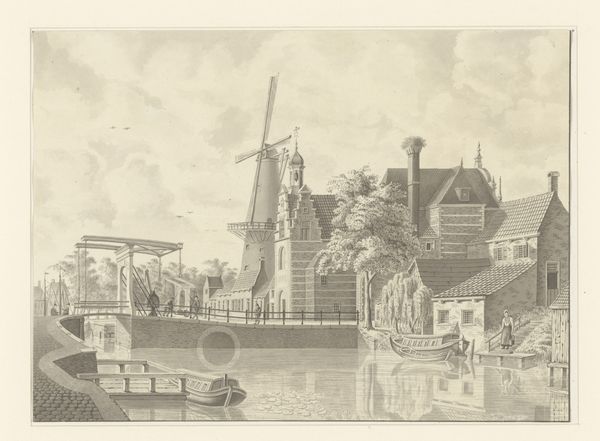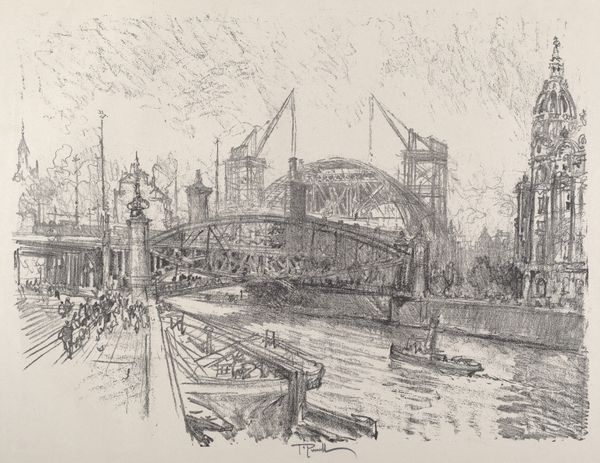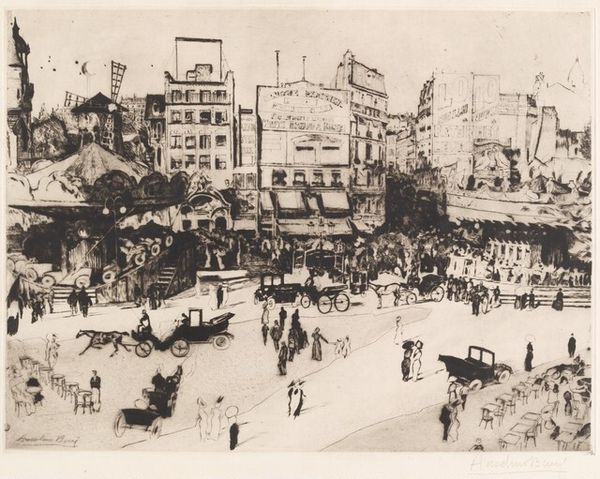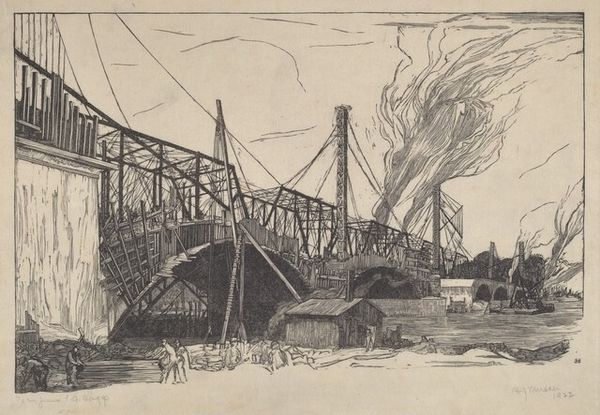
drawing, print, graphite
#
drawing
# print
#
line
#
graphite
#
cityscape
#
realism
Dimensions: image: 310 x 412 mm sheet: 352 x 458 mm
Copyright: National Gallery of Art: CC0 1.0
Curator: Let’s spend a moment with Martin Linsey’s "Euclid Beach," a graphite drawing and print from 1946. It presents a view of what appears to be an amusement park. What's your initial impression? Editor: There's a really potent feeling of post-war optimism mixed with a bit of melancholy. The stark lines create a sense of almost frantic energy but the muted tones suggest a quietness too. The way Linsey’s rendering conveys form makes me really want to get in there to understand how all of these mechanical rides and buildings came to be, and were made. Curator: Absolutely. Considering its date, 1946, it reflects a particular moment. This cityscape, with its focus on leisure and entertainment, comes just after the close of World War II. Euclid Beach Park was a hugely popular amusement park in Cleveland; this image feels indicative of America's revived consumerism and the reclaiming of joyful experiences after years of austerity and war. We should consider the politics of escapism, in that respect, too. Editor: And look at the level of detail in those rollercoasters! Linsey painstakingly depicts the materiality of this amusement park through lines and hatching techniques; it speaks to a really tactile approach. It feels like this work privileges the actual labour involved in sketching this massive site. Did the rise of leisure have consequences for labor practices at that time? Curator: Good question! Examining the materials is key; graphite allowed for reproducibility. The print makes the image accessible, reflecting the democratizing effect of leisure itself. We might also want to explore how certain demographics had greater access to the park at this time as well, compared to others. Leisure doesn't exist in a vacuum; it's always tied to societal structures and inequalities. It would be so insightful to explore any intersectional components to those visiting the space... Editor: It strikes me too that it's fascinating to witness his artistic interpretation and the conscious hand that informs the choice of detail and form presented. Overall, the materials work together seamlessly to provide a certain quality of this leisure landscape in the 1940s! Curator: This work's enduring relevance is clear in its ability to spark dialogue around memory, leisure, and the social and economic landscapes that shaped our past and continue to shape our present. Thanks so much for offering your thoughts on Linsey's approach to image-making, especially concerning his selected materials!
Comments
No comments
Be the first to comment and join the conversation on the ultimate creative platform.
